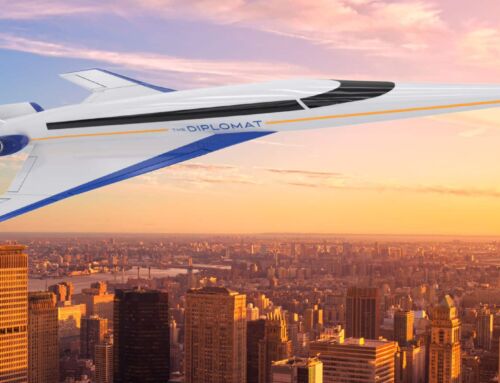
From Mach 1 to Mach 9: Meet the Aerospace Innovators Redefining Speed
The pursuit of faster, more efficient flight has long captured the imagination of engineers, aviators, and visionaries alike. Today, a new wave of innovation is transforming the dream of supersonic and hypersonic travel into reality. From quiet supersonic jets that can cut transatlantic travel time in half to hypersonic aircraft capable of reaching speeds above Mach 5, companies and government agencies around the world are redefining what’s possible in aerospace. This page highlights the leading efforts in both supersonic and hypersonic development—offering a glimpse into the future of flight that is faster, smarter, and more ambitious than ever before.
Supersonic Aircraft Developers
Spike Aerospace
- Summary: Spike Aerospace is developing the S-512, a supersonic business jet targeting speeds of Mach 1.6. The aircraft features a windowless cabin with panoramic displays and is designed for transoceanic routes.
- CEO: Vik Kachoria
- Founded: 2013
- Expected Entry into Service: Late 2020s
- Website: spikeaerospace.com
Boom Supersonic
- Summary: Boom is developing the Overture, a 64–80 passenger airliner designed to cruise at Mach 1.7. The company aims to make supersonic travel more accessible and sustainable, with plans for commercial flights by 2029.
- CEO: Blake Scholl
- Founded: 2014
- Expected Entry into Service: 2029
- Website: boomsupersonic.com
Lockheed Martin & NASA – X-59 QueSST
- Summary: In partnership with NASA, Lockheed Martin is developing the X-59 QueSST, an experimental aircraft designed to reduce the sonic boom to a “sonic thump.” The project aims to help lift the ban on supersonic flight over land.
- Program Lead: Peter Coen (NASA)
- Founded: NASA (1958), Lockheed Martin (1995)
- Expected Entry into Service: Experimental aircraft; first flight anticipated in 2025
- Website: nasa.gov/quesst
Exosonic (No longer in operation)
- Summary: Exosonic was developing a 70-passenger supersonic jet capable of Mach 1.8. It received a U.S. Air Force contract but ceased operations in late 2024 due to funding issues.
- Former CEO: Norris Tie
- Founded: 2019
- Expected Entry into Service: N/A
- Website: exosonic.com
JAXA (Japan Aerospace Exploration Agency)
- Summary: JAXA is advancing its Re-BooT project, focusing on robust low-boom design technology for future supersonic passenger aircraft. The initiative aims to make overland supersonic flight viable.
- Program Lead: Masanobu Shimada
- Founded: 2003
- Expected Entry into Service: 2030s
- Website: aero.jaxa.jp
COMAC (Commercial Aircraft Corporation of China)
- Summary: COMAC has proposed the C949, a supersonic airliner designed to fly at Mach 1.6 with longer range and quieter operation than the Concorde. It represents China’s growing ambition in high-speed civil aviation.
- Chairman: He Dongfeng
- Founded: 2008
- Expected Entry into Service: 2035
- Website: comac.cc
Hypersonic Aircraft Developers
Hermeus
- Summary: Based in Atlanta, Hermeus is developing Quarterhorse and Halcyon—high-speed aircraft that aim to operate above Mach 5. These designs combine turbine and scramjet propulsion for hypersonic commercial travel.
- CEO: AJ Piplica
- Founded: 2018
- Expected Entry into Service: Early 2030s
- Website: hermeus.com
Venus Aerospace
- Summary: Venus Aerospace is working on Stargazer, a hypersonic aircraft designed for one-hour global travel at Mach 9. The company is pioneering propulsion and thermal protection systems.
- CEO: Sarah “Sassie” Duggleby
- Founded: 2020
- Expected Entry into Service: 2030s
- Website: venusaero.com
Reaction Engines (No longer in operation)
- Summary: UK-based Reaction Engines was developing the SABRE engine, a hybrid air-breathing/rocket propulsion system. The company entered administration in 2024.
- Former CEO: Mark Thomas
- Founded: 1989
- Expected Entry into Service: N/A
- Website: reactionengines.co.uk
DARPA – Glide Breaker Program
- Summary: DARPA’s Glide Breaker program is developing technologies to intercept hypersonic glide vehicles. It is part of a broader U.S. government effort to address emerging hypersonic threats.
- Program Manager: Dr. Mark Gustafson
- Founded: 1958 (DARPA)
- Expected Entry into Service: Mid-2030s
- Website: darpa.mil
Raytheon & Northrop Grumman – HACM Program
- Summary: Raytheon and Northrop Grumman are collaborating on the Hypersonic Attack Cruise Missile (HACM), a scramjet-powered missile designed for rapid strike operations.
- Raytheon CEO: Greg Hayes
- Northrop Grumman CEO: Kathy Warden
- Founded: Raytheon (1922), Northrop Grumman (1994)
- Expected Entry into Service: Late 2020s
- Websites: rtx.com, northropgrumman.com
Stratolaunch – Talon-A
- Summary: Stratolaunch is developing the Talon-A series, a reusable hypersonic test vehicle for high-speed flight testing. The platform supports both commercial and defense innovation.
- CEO: Zachary Krevor
- Founded: 2011
- Expected Entry into Service: Initial testing began in 2024; operational by 2026
- Website: stratolaunch.com
Lingkong Tianxing (China) – “Soaring Monkey”
- Summary: Lingkong Tianxing Technology is developing a hypersonic drone called “Soaring Monkey,” with long-term plans to evolve into a passenger-capable hypersonic vehicle.
- Leadership: Not publicly listed
- Founded: Unknown
- Expected Entry into Service: 2030s
- Website: Not available
#AerospaceInnovation #SupersonicFlight #HypersonicTech #FutureOfFlight #AviationLeadership



